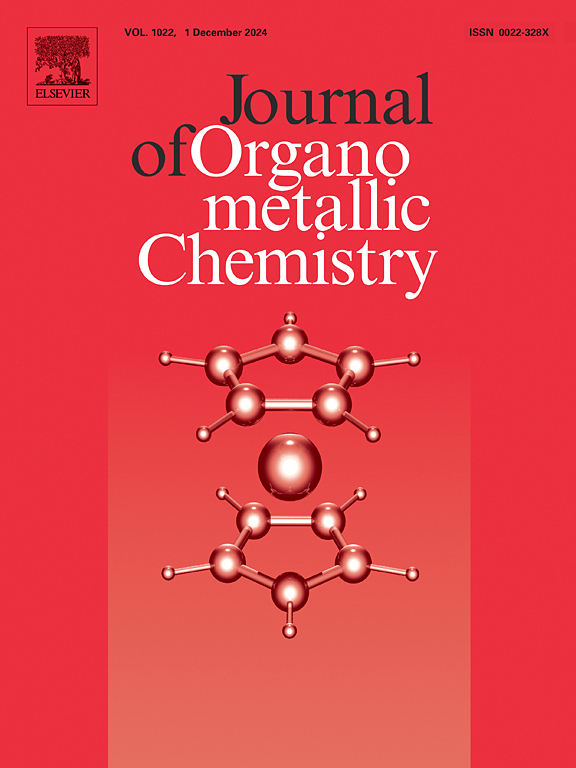High selective photo-oxidation of cyclohexanol into cyclohexanone by W18O49 - Graphene oxide composite
IF 2.1
3区 化学
Q3 CHEMISTRY, INORGANIC & NUCLEAR
引用次数: 0
Abstract
The efficient photooxidation of cyclohexanol to cyclohexanone under mild conditions presents significant challenges due to its low efficiency and unwanted by-products. In this study, we present a simple and scalable method to prepare a graphene oxide (GO)-tungsten oxide (W₁₈O₄₉) composite that overcomes these limitations. By combining ultrathin oxygen-vacancy containing W₁₈O₄₉ nanowires with GO sheets, we create a type II photocatalyst that enhances light absorption, minimizes electron-hole recombination, and selectively converts cyclohexanol to cyclohexanone. This design leverages the distinct advantageous characteristics of both materials, avoiding the aggregation of W18O49 nanowires and GO sheets while enhancing the absorption of reactants. Under ambient conditions and simulated solar light irradiation, the composite with a mass ratio of W18O49 to GO being 8:1 achieved 99.5 % selectivity for cyclohexanone with a conversion rate of 2.56 %, which is 1.83 times greater than standalone W18O49. The investigation into the selective photocatalytic oxidation mechanism was conducted through photoelectric measurements, band energy spectrum analysis, and active radical trapping experiments. The findings of this study demonstrate improvements in cyclohexanol adsorption and the charge separation by utilizing GO-W18O49 materials, ultimately leading to a strong preference for cyclohexanone under gentle conditions. This groundbreaking method holds significant promise for the advancement of photocatalysis technology.

W18O49 -氧化石墨烯复合材料高选择性光氧化环己醇制备环己酮
环己醇在温和条件下光氧化制环己酮,由于其效率低和不良副产物的存在而面临重大挑战。在本研究中,我们提出了一种简单且可扩展的方法来制备氧化石墨烯(GO)-氧化钨(W₁₈O₄₉)复合材料,克服了这些限制。通过将超薄含氧空位W₁₈O₄₉纳米线与氧化石墨烯片结合,我们创造了一种II型光催化剂,它可以增强光吸收,最大限度地减少电子-空穴复合,并选择性地将环己醇转化为环己酮。该设计利用了这两种材料的独特优势特性,避免了W18O49纳米线和氧化石墨烯片的聚集,同时增强了对反应物的吸收。在环境条件和模拟太阳光照下,W18O49与氧化石墨烯质量比为8:1的复合材料对环己酮的选择性为99.5%,转化率为2.56%,是单独W18O49的1.83倍。通过光电测量、能带能谱分析和活性自由基捕获实验对选择性光催化氧化机理进行了研究。本研究结果表明,GO-W18O49材料在环己醇吸附和电荷分离方面有所改善,最终导致在温和条件下对环己酮有强烈的偏好。这种突破性的方法对光催化技术的进步具有重要的前景。
本文章由计算机程序翻译,如有差异,请以英文原文为准。
求助全文
约1分钟内获得全文
求助全文
来源期刊

Journal of Organometallic Chemistry
化学-无机化学与核化学
CiteScore
4.40
自引率
8.70%
发文量
221
审稿时长
36 days
期刊介绍:
The Journal of Organometallic Chemistry targets original papers dealing with theoretical aspects, structural chemistry, synthesis, physical and chemical properties (including reaction mechanisms), and practical applications of organometallic compounds.
Organometallic compounds are defined as compounds that contain metal - carbon bonds. The term metal includes all alkali and alkaline earth metals, all transition metals and the lanthanides and actinides in the Periodic Table. Metalloids including the elements in Group 13 and the heavier members of the Groups 14 - 16 are also included. The term chemistry includes syntheses, characterizations and reaction chemistry of all such compounds. Research reports based on use of organometallic complexes in bioorganometallic chemistry, medicine, material sciences, homogeneous catalysis and energy conversion are also welcome.
The scope of the journal has been enlarged to encompass important research on organometallic complexes in bioorganometallic chemistry and material sciences, and of heavier main group elements in organometallic chemistry. The journal also publishes review articles, short communications and notes.
 求助内容:
求助内容: 应助结果提醒方式:
应助结果提醒方式:


